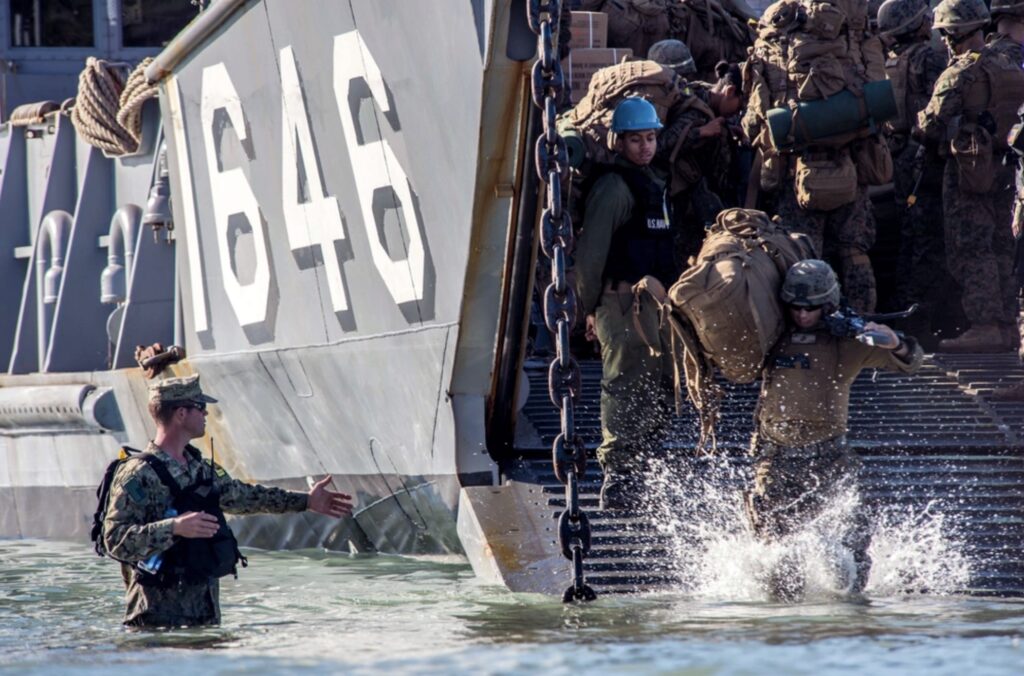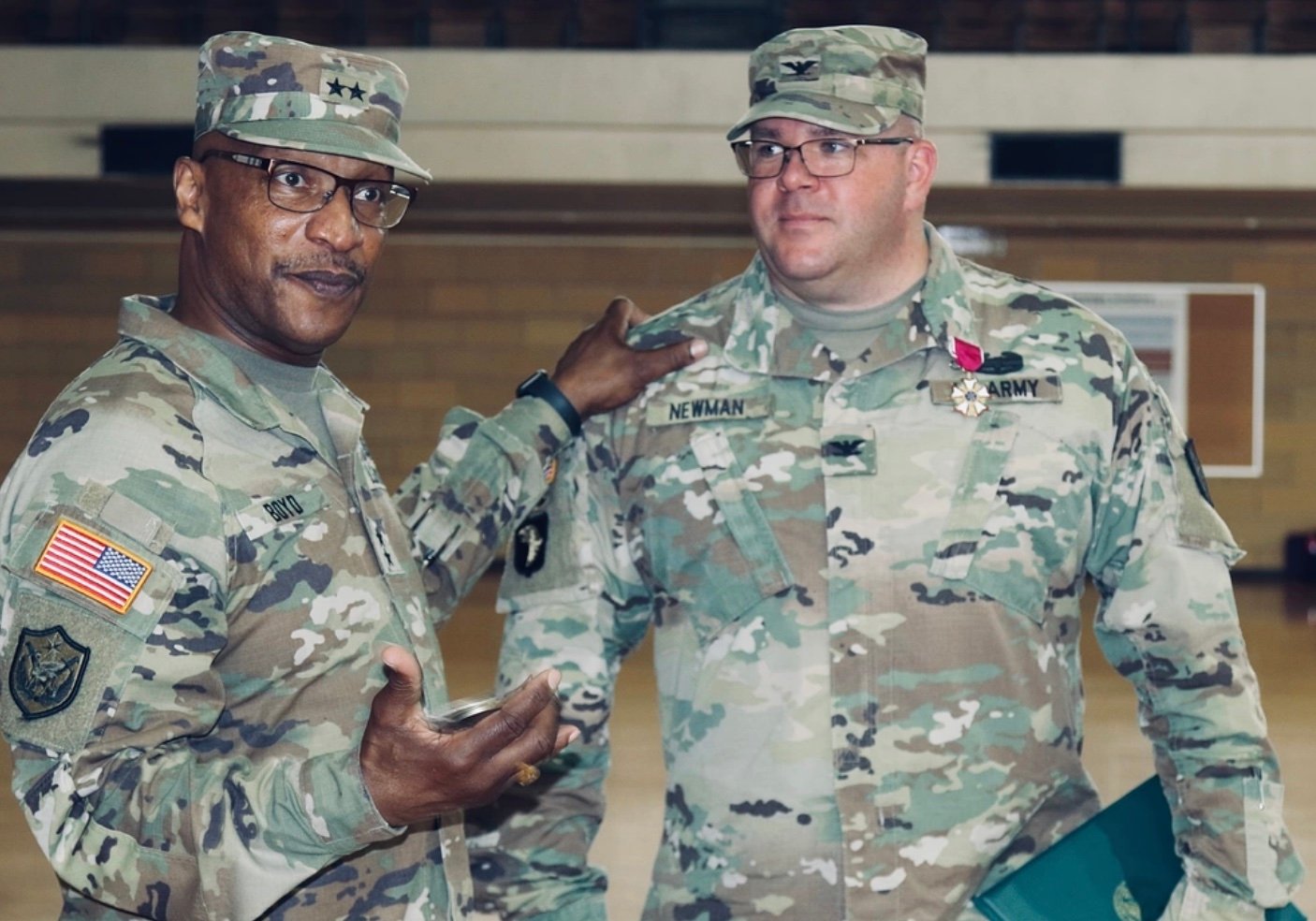President Donald Trump’s latest warning to Hamas has raised the specter of renewed conflict in the Middle East—and left many wondering just how close the U.S. military could be to getting pulled back into the region.
“If Hamas continues to kill people in Gaza, which was not the Deal, we will have no choice but to go in and kill them,” Trump wrote in a post on Truth Social. “Thank you for your attention to this matter.”
Trump later clarified that US forces would not be involved in the renewed offensive he had threatened.
“It’s not going to be us, we won’t have to,” he said in the Oval Office Thursday. “There are people very close, very nearby that will go and they’ll do the trick very easily, but under our auspices.”
His remarks come amid reports that Hamas fighters have used the ceasefire to reassert violent control over Gaza, targeting suspected Israeli collaborators and rival factions. Israel has accused Hamas of breaking the terms of the truce, citing delayed hostage returns and new executions of alleged traitors.
A Volatile Truce on the Brink
According to numerous news outlets, the fragile peace agreement that Trump brokered just three days earlier is already in jeopardy. Hamas, emboldened by internal power plays and pressure from its Iranian allies, has reportedly resumed punitive attacks against gangs and clans accused of collaborating with Israel.
Meanwhile, Israel has continued operations near Gaza’s perimeter, claiming security concerns while blocking aid convoys and delaying border openings. Palestinian officials say the continued Israeli military presence and killings of civilians are violations of the ceasefire.
Trump, who initially excused Hamas’s execution of “a couple of bad gangs,” now insists that if the group refuses to disarm, “we will disarm them, and it’ll happen quickly and perhaps violently.”
That’s a statement with implications far beyond Gaza.
The U.S. Military’s Shadow in the Region
Even as Trump insists “it won’t be us,” American forces are positioned within striking distance of Gaza—and are capable of immediate intervention if Washington changes its mind.
Forward-Deployed Naval Power
As of mid-October 2025, U.S. naval forces near Israel include ballistic missile defense (BMD)-capable destroyers operating in the Eastern Mediterranean, along with a significant naval presence in the Red Sea and Arabian Sea. These forces were originally deployed to deter further escalation following the June 2025 Israel–Iran hostilities and to counter ongoing threats from Iran-backed groups across the region.

In the Eastern Mediterranean, several Arleigh Burke-class guided-missile destroyers are positioned to defend Israel and project power if needed. Reported ships in the area include:
- USS Paul Ignatius (DDG-117)
- USS Oscar Austin (DDG-79)
- USS Thomas Hudner (DDG-116)
- USS Arleigh Burke (DDG-51)
- USS The Sullivans (DDG-68)
These vessels, armed with Tomahawk cruise missiles and advanced Aegis radar systems, could provide precision strike capabilities or missile defense coverage over Israel and Gaza. In the event of escalation, the most likely U.S. response would center on naval and airpower, not large-scale ground deployments—using ship-launched strikes, carrier-based aircraft, and drones to target Hamas military infrastructure or Iranian proxy assets.
Air and Ground Readiness
The 82nd Airborne Division’s Immediate Response Force (IRF) remains on standby, trained to deploy anywhere on the planet within 18 hours. As part of the Army’s Global Response Force, one of the division’s brigade combat teams is always on rotation, prepared for airborne assaults or to secure key objectives for follow-on troops.
The U.S. also maintains powerful air capabilities throughout the region:
- Muwaffaq al Salti Air Base (Jordan) – Home to the 332nd Air Expeditionary Wing, about 60 miles from Israel’s border.
- Al Udeid Air Base (Qatar) – The largest U.S. installation in the Middle East and forward headquarters of U.S. Central Command.
- Al Dhafra Air Base (UAE) – Hosts the 380th Air Expeditionary Wing, equipped with F-22 fighters, reconnaissance aircraft, and drones capable of ISR or strike missions.
At sea and in the air, these forces can deliver precision strikes, enforce no-fly zones, or protect American assets if hostilities spread.
If the U.S. Decides to Act
Should Trump authorize action “under U.S. auspices,” the most likely scenario would involve a naval-air campaign coordinated through Al Udeid and the 6th Fleet in the Mediterranean. Cruise missile strikes from destroyers and drones could target Hamas command nodes, weapons stockpiles, or Iranian proxy infrastructure.
Follow-on operations might involve the 82nd Airborne or Marines securing temporary airfields or evacuation corridors—but full-scale ground combat in Gaza remains highly improbable.
Still, with Iran’s Axis of Resistance—including Hezbollah, the Houthis, and Iraq’s Shiite militias—ready to retaliate, any U.S. or Israeli escalation risks turning the eastern Mediterranean into a multi-front war zone.
Could U.S. Troops Be Drawn In?
While Trump’s statements stop short of committing American boots on the ground, history suggests that the Middle East’s volatility rarely stays contained. A single missile strike, embassy threat, or downed aircraft could force Washington’s hand.
Should U.S. citizens or personnel be endangered, the Pentagon’s IRF or a Marine QRF would likely be the first to move—potentially deploying from Al Udeid or Jordan within hours. History shows that presidential promises of “no boots on the ground” can be overtaken by events: President Obama famously said in 2013, “I will not put American boots on the ground in Syria,” yet the policy later shifted to include small teams of U.S. special-operations forces and task-organized Ranger elements operating in Syria to carry out direct-action, advisory, and hostage-recovery missions.
For now, the official line is that the U.S. will not fight Hamas directly. But the words “under our auspices” carry weight—and in the Middle East, even one wrong move can turn political posturing into another forever war.
© 2025 The Salty Soldier. All rights reserved.
Reproduction without written consent is strictly prohibited.




